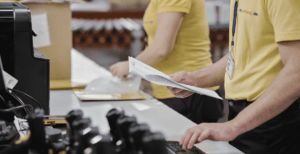
In the ever-evolving landscape of business, quantifying the impact of good User Experience (UX) and product design is essential for understanding the tangible benefits that extend beyond aesthetics. This section delves into the specific metrics—increased customer retention, higher conversion rates, and overall revenue growth—that showcase the profound influence of a well-crafted user experience on a company’s bottom line.
Examples of measurement for good UX design in product development
1. Increased Customer Retention
A seamless user experience is a key driver of customer retention. When users find a product enjoyable, easy to use, and aligned with their needs, they are more likely to become loyal customers. Metrics such as customer churn rates and repeat purchase frequency become indicators of the success of a user-centric approach to product and UX design. Companies that invest in creating a positive user experience see a significant reduction in customer churn rates, leading to higher retention and long-term revenue growth.
Apple’s UX Design
One company that has excelled in improving customer retention through effective product and UX design is Apple. The tech giant’s products, such as the iPhone and Macbook, are known for their sleek designs and intuitive user interfaces. This has resulted in a loyal fan base who continue to purchase Apple products repeatedly, driving sustained revenue growth for the company.
2. Higher Conversion Rates
In the world of e-commerce, conversion rates are crucial for measuring the success of a business. A seamless user experience plays a significant role in driving higher conversion rates by simplifying the purchasing process and creating a positive perception of the brand. With an increasing number of consumers turning to online shopping, companies that invest in optimizing their UX design see improvements in conversion rates and subsequently, revenue.
Amazon’s UX Design
Amazon is known for its simple and convenient online shopping experience, which has contributed to the company’s massive success. By constantly improving their website design and user interface, Amazon has been able to increase conversion rates, leading to higher sales and revenue growth.

3. Improved Brand Perception
A well-designed product and user experience can also significantly impact a company’s brand perception. A positive UX design creates a favorable first impression, building trust and credibility with customers. This can lead to increased customer loyalty and word-of-mouth marketing, ultimately driving revenue growth.
Bose’s User-Friendly Product Design
Bose, a leading audio equipment company, is known for its high-quality and user-friendly products. The company’s attention to detail in their product design, from the packaging to the user interface, has contributed to their strong brand perception and customer loyalty.
4. Cost Savings
Investing in UX design can also lead to cost savings for companies. A well-designed product or website requires fewer resources and time to maintain, reducing operational costs. Additionally, a good user experience can reduce customer support inquiries and returns, saving the company money in the long run.
Dyson’s UX in Product Design
Dyson, a company known for its innovative and high-performance household appliances, places a strong emphasis on user experience in their product design. By incorporating intuitive features and simple user interfaces, Dyson has been able to reduce customer support inquiries and returns, resulting in cost savings for the company.
Quantitative Analysis and Iterative Improvement of hardware product
Many companies also use quantitative data and metrics to analyze the impact of UX design on their products. By conducting user testing and gathering feedback, companies can identify areas for improvement in their product design and make iterative changes to optimize the user experience.
For hardware products, this could involve analyzing metrics such as product usage, customer satisfaction ratings, and return rates. By continuously gathering and analyzing data, companies can make evidence-based decisions to improve their product design and ultimately enhance the user experience. This also allows for a more cost-effective approach as changes can be made before mass production, avoiding the need for costly recalls or redesigns later on.
In today’s competitive market, investing in UX design is no longer a luxury but a necessity for product manufucturing companies. Not only does it lead to happier customers and increased sales, but it also has the potential to reduce operational costs and save money in the long run. By incorporating user experience into every stage of the product development process, companies can achieve success and stand out in a crowded market.
Please refer to this article to delve into the crucial role of user experience (UX) in the broader context of achieving business success.




